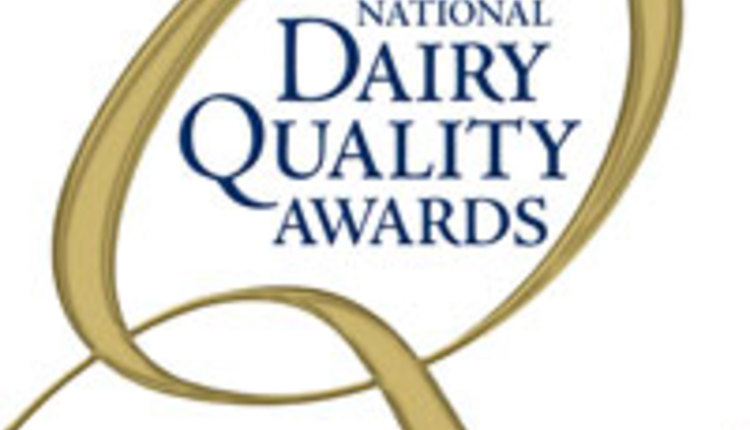
As the season wears on, farmers should carefully consider crucial safety actions that can save lives or prevent illness. Shutske noted that three areas where farmers should take additional precautions are extracting equipment stuck in the mud, working around grain dust and ensuring proper lighting on farm equipment.
Getting Unstuck
Soil moisture conditions are leading to tractors, combines and grain transport equipment getting deeply mired in mud – often up to their axles. This makes getting them “unstuck” a huge and potentially dangerous challenge.
“Unfortunately, every year, we hear of towropes, straps, cables, and even chains or attaching devices suddenly snapping and recoiling like a heavy-duty rubber band,” said Jim Versweyveld, Extension Walworth County agriculture educator. “As these snap forward or backward, they often bust through glass and fly toward the operator like a missile. They can strike an operator with the force that can easily lead to serious injury or death.”
He offered some critical reminders for getting unstuck:
- High quality, appropriately rated chains of adequate length are usually preferred over ropes or cable.
- Know the limit and capacity of chains used to pull stuck machines.
- If a part fails while you are attempting to remove an implement that’s stuck, it will almost always fail at the weakest point – so avoid using chain that has been welded or repaired in other ways.
- Always make sure you are using a clevis and pin strong enough to pull safely. In recent years, there have been concerns about inexpensive hitch pins on the market that look big and strong enough to withstand large loads but may not have been properly designed or manufactured. If in doubt, check with a trusted machinery dealer.
- Only hitch to the drawbar if you are using a tractor – hitching higher can lead to a backward rollover before the tractor operator has time to react.
- Only attach to a component on the stuck vehicle or implement that is designed to support the huge force exerted as you attempt to free it from mud. Consult the operator’s manual for the best location to connect.
- Don't put equipment back into service without a thorough inspection to make sure parts have not been damaged or become loose.
- When in doubt, call a professional! Towing charges are insignificant when compared to a tragic mistake.
- More information about correct procedures and equipment can be found at: http://bit.ly/WI-Stuck This web page also references content that may be useful for machinery dealers or towing companies.
Don’t Get Sick from Grain Dust
Late harvest often leads to having stored corn or other products that go into bins in poor condition with damage, low test weight, or still more wet than desired.
“Grain dust is a complex soup containing kernel particles, insect and rodent feces, soil particles, mold and mold spores, and bacteria,” said Shutske. “This mix can cause respiratory problems for farmers and workers exposed to dust including health concerns caused by toxic or allergic reactions.”
Shutske provided tips to keep from getting sick as harvest eventually winds down to its finale:
- Have the correct and clean air filter in place when operating the combine. Use the appropriate setting on the blower in the cab whether you are using the heater. This will minimize dust concentrations that enter the cab.
- Avoid direct exposure to dust whenever possible, regardless of your sensitivity. Stay in the cab when unloading. Use the wind to your advantage rather than standing directly in a cloud of dust any time grain is being moved.
- Properly adjust your combine to minimize grain damage. This will help to also minimize the amount of dust being generated.
- When you are going to be exposed to dust, wear a NIOSH-approved and certified “N-95” dust mask (respirator) that fits you properly. CAUTION: Wear a respirator only if you are free of health problems, particularly with your heart and lungs. Respirators are only effective if you are cleanly shaven. Local health professionals can be a great source of information and can recommend the type of respirator that can be safely worn.
- If you work in a facility where worker safety regulations for respiratory protection apply, such as a grain elevator or feed mill, there are other regulatory requirements before a dust mask can be worn by workers. These same practices can also help protect farmers and their employees and are increasingly being required by large farms and their insurers.
- Avoid dust exposure if you have a long-term respiratory health issue, including asthma, COPD, or existing respiratory infections or conditions. Individuals who have these conditions should be alert for symptoms, even when working in a relatively clean environment like the cab of a combine and should always minimize dust exposure.
- If you feel sick, call your health care provider. If you find yourself working in a very dusty situation (like loading or cleaning out a bin or getting a heavy, prolonged exposure near a combine in the field) and end up feeling sick a few hours later, call for medical advice.
- Other information can be found at: http://bit.ly/WI-GrainDust
Light Yourself Up (Like a Christmas Tree)!
The highway regulations for farm equipment (Implements of Husbandry, or IoH) are relatively complex and vary based on width of equipment and other factors. In addition, new federal highway regulations signed by the President in 2012 have additional requirements for any farm machines that are moved or operated on public roadways if they were manufactured AFTER mid-2017.
The Wisconsin requirements for IoH lighting and marking are summarized in this fact sheet at: http://bit.ly/WI-IoH
While these are some of the legal requirements, there are other best practices for roadway safety that may go above and beyond and that are especially important given how late the season has gone, the possibility of poor weather and highway conditions and the fact that we now have so few hours of good daylight as days get shorter and the sun gets lower in the sky.
Shutske said, “Use the correct lights and light your equipment up like a Christmas tree. You want your farm equipment to be highly visible.”
Versweyveld and Shutske offered these tips:
Regardless of state requirements, if your farm implements, tractors, combines and other machines defined as an IoH have flashing amber lights, always use them while on the road. It is critical that you attract the attention of others on the roadway as soon as is possible, giving them ample time and distance to slow down.
Most newer equipment with flashers also have turn signals. Use them. Many farm equipment-motor vehicle collisions occur when the slower machine is making a left hand turn as a motor vehicle is attempting to pass on the left.
As the season grinds on, double check the visibility of SMV emblems. They should be clear, bright, clean, and unfaded. The newer SMV emblems have greater visibility from the rear and are designed with embedded retroreflective materials that do a better job of catching light and reflecting it back to approaching motorists. Replace yours if needed.
If flashing amber lights, SMV emblems, reflectors and other lighting/marking is obscured (for example, if towed wagons block them on the tractor), it is critical - and required - that you provide adequate lighting and marking on the rear-most implements—even if you are only traveling a short distance on the highway.
On older equipment, consider purchasing flashers, lights and other equipment that can be easily moved from machine to machine if needed. New LED and battery technology is making this less difficult and can provide needed visibility at a relatively low cost without having to permanently mount and wire lighting equipment.
Even on older equipment, consider adding additional side marking on large machines and implements (combines, large wagons, etc.) – Retroreflective tape is cheap, easily installed, and can save a life.
A handbook showing ideal IOH lighting and marking, including that required by federal law and compliant with national standards and best practices can be downloaded for free at: http://bit.ly/AEM-LightingMarking

